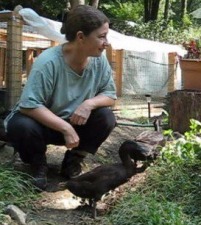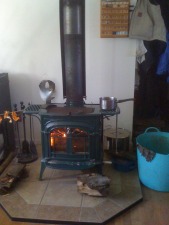Changing Rhythms
Rhythms that I developed as a desk jockey for many years no longer work for what my current and hoped-for life requires. In fact, those deeply ingrained rhythms are a hindrance. Take, for example, the idea of spring cleaning. Starting fresh as winter iciness gives way to spring is a great practice. And if the house were the only realm of concern to me, spring is a great time to refresh and renew, to blow out the stale air and draw in the aromas of early flowers. My current chosen path, however, has much less time in early spring for anything other than seeding, transplanting, setting up new garden areas and digging in compost. And so, mid-winter is the season for me to stand in the doorway of each room and take it in as best I can with fresh eyes. This is the time to take a deep breath and look at items that appeared to have possible future use, perhaps a year ago. The easy items to let go are papers with expiration dates now past. Lists and reminders of things I did or did not do can also be gone. From time to time a sheet of Forever stamps will turn up, and I feel like I just got paid for doing this task! Enough of that – there are books, blogs, and webinars on sorting through our piles of neglect. The point I want to make here is that now is the time to clear out, if that’s what any of us want to do (I do). Because, if for no other reason . . . It’s almost time to start them seeds!!! Woooot!!!! Depending on our plans for the year, we may want to start some greens right now as a wintersowing project. Wintersowing can begin around the solstice – yes, three weeks ago! Celeriac and celery don’t need to be started quite yet, but by the end of next month, it might be worth getting some into soil for an early start. One never knows, it could be an early spring. Those of us with cold frames or low tunnels or hoop houses can get these going indoors and transplant them to those sheltered structures. Those with greenhouses – well – that’s got its own timeline, and seeds are likely being planted within a few weeks already. This year I am thinking ahead for ways to reduce plastic use, and be creative using garden and indoor space to reduce chaos and increase abundance. We are still - slowly - building Day Pen II, a little larger than Day Pen I, and tall enough to walk into. I plan to have a passive solar shelter in the new Day Pen so that the ducks can enjoy the outdoors for longer periods of time on those sunny but very cold and breezy days. The ducks have their own rhythms that slowly change as they get older. Our six-year-old ducks take longer rest breaks from laying eggs, while our one-year-old has already started back up after a two-month hiatus. They seem to be able to tell time - probably from the sun angle. They get a little antsy these days that are still so short. But they are remarkably content for the most part. I am sure they understand seasons and rhythms better than I do. The rhythm that I am learning to dance to nowadays is new to me, so I am faltering at times. At other times, I smile as I feel myself flowing with the beat. It’s truly an ancient beat, that pounded in the hearts of my ancestors (and theirs before them) on a little emerald green island hundreds of years ago. I live on Turtle Island, now, where the rhythms are somewhat different, I imagine, than those of my ancestors’ farms and gardens. But I think much is the same. The days begin to lengthen while the air is still icy, thoughts turn to what I will want to be eating in the spring, summer, fall, and even next winter. It’s not too early to start making the hundreds of decisions about seed varieties, nutrients, protection against flood and drought and high winds and late or early frosts. I can ponder all that as I sift “through the layers of dusty books and faded papers,” as Kate Wolf put it in “Across the Great Divide.” |

